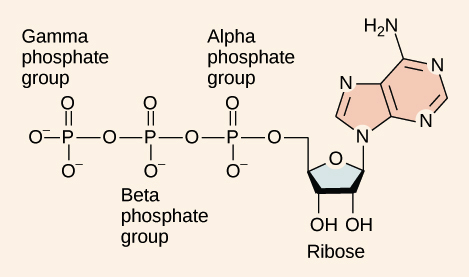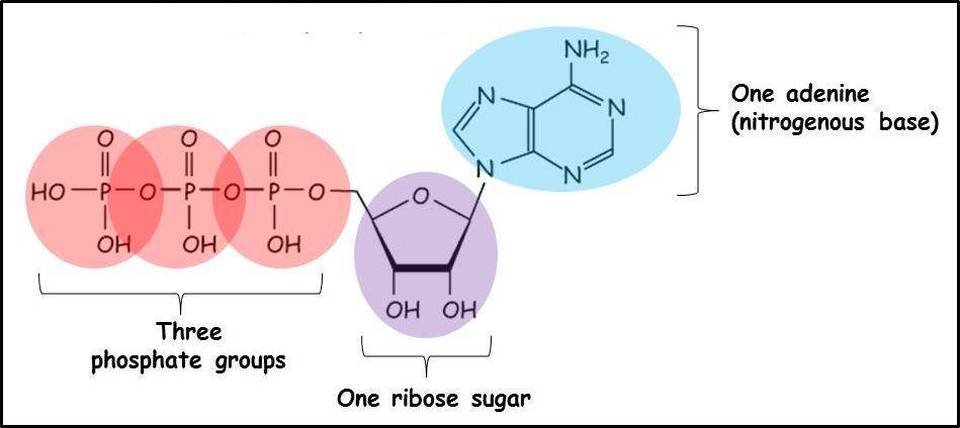Glucose and ATP Study Guide
Check out awesome, educational VR rooms on Inspirit’s mobile app (available for iOS and Android devices)🤩
Introduction:
A glucose molecule, with the chemical formula C6H12O6, transports a packet of chemical energy that is precisely the perfect size for transit and absorption by cells. Glucose is the “deliverable” kind of energy in your body, being transported in your blood through capillaries to each of your 100 trillion cells. Glucose is the sugar generated by photosynthesis and, as such, is the almost universal nourishment for life.
On the other hand, ATP molecules (also known as Adenosine triphosphate molecules) store a little quantity of energy yet release just enough to conduct work within a cell. Muscle cell proteins, for example, pull against one another using the energy produced when ATP links break free. Photosynthesis generates and utilizes ATP – for energy to produce glucose! As a result, ATP is the usable type of energy for your cells. ATP is usually referred to as the cell’s “energy currency.”
Molecule of glucose
- Glucose has the chemical formula C6H12O6 and is a simple sugar.
- Glucose is the most common monosaccharide, a kind of carbohydrate.
- Plants and most algae primarily produce glucose during photosynthesis from water and carbon dioxide utilizing energy from sunlight. It is utilized to produce cellulose in cell walls, the world’s most abundant carbohydrate.
- Glucose is the essential source of energy in all species’ energy metabolism.Glucose for metabolism is stored as a polymer, mostly as starch and amylopectin in plants and glycogen in mammals.
- Glucose circulates as blood sugar in the blood of animals.
- D-glucose is the naturally occurring type of glucose, whereas l-glucose is synthesized in very tiny amounts and has little consequence.
- Glucose is an aldohexose because it is a monosaccharide with six carbon atoms and an aldehyde group.
- The glucose molecule can exist as an open-chain (acyclic) or ring (cyclic) structure.
- Glucose occurs naturally and is present in its free form in fruits and other plant components.
Materials found in an ATP molecule
- Fritz Albert Lipmann and Herman Kalckar established the fundamental role of ATP in energy metabolism in 1941.
- ATP is a nucleotide composed of three primary structures: adenine, a nitrogenous base; ribose, a sugar; and a chain of three phosphate groups attached to ribose.
- The phosphate tail of ATP is the real energy source that the cell uses.The available energy is held in the phosphate bonds and is released when they are broken, which occurs with the addition of a water molecule (a process called hydrolysis).
- When only the outer phosphate of ATP is removed to generate energy, ATP is transformed to adenosine diphosphate (ADP), a nucleotide with only two phosphates.
- By transferring a phosphate group to another molecule, ATP can fuel cellular operations (a process called phosphorylation).This transfer is carried out by specific enzymes that link energy from ATP to energy-requiring cellular functions.
- Although cells constantly break down ATP to obtain energy, ATP is also constantly generated from ADP and phosphate via cellular respiration mechanisms.The enzyme ATP synthase, which converts ADP and phosphate to ATP, produces the majority of the ATP in cells.
- ATP synthase is present in the membrane of cellular organelles known as mitochondria; the enzyme is also found in chloroplasts in plant cells.
Importance of ATP
- An ATP molecule Although it contains less energy than glucose, it has a more complicated structure.
- The “A” in ATP refers to the majority of the molecule, adenosine, a nitrogenous base combined with a five-carbon sugar.
- The “TP” stands for the three phosphates connected by bonds that store the energy that cells need.
- Only the outermost connection usually breaks to liberate or spend energy for cellular function.
- An ATP molecule is similar to a rechargeable battery. Its energy can be used when it breaks apart into ADP (adenosine diphosphate) and phosphate, and the “worn-out battery” ADP may then be recharged using fresh energy to connect a new phosphate and rebuild ATP.
Conclusion:
- Glucose is the source of energy metabolism in all species.
- Glucose circulates as blood sugar in animals.
- ATP (Adenosine triphosphate) is a biomolecule that belongs to the nucleic acid class.
- Single molecules of ATP are nucleotide derivatives made up of ribose molecules, three phosphate groups, and one adenine molecule.
- ATP hydrolase is an enzyme that catalyzes the hydrolysis of ATP into ADP (adenosine diphosphate) and an inorganic phosphate group.
FAQs:
1. How are 34 ATP produced in the electron transport chain?
The process of forming ATP from the electron transport chain is known as oxidative phosphorylation. Electrons carried by NADH H and FADH2 are transferred to oxygen via a series of electron carriers, and ATPs are formed. Three ATPs are formed from each NADH H, and two ATPs are formed for each FADH2 in eukaryotes.
2. What is the relationship between glucose and ATP?
- A glucose molecule is progressively broken down into carbon dioxide and water during cellular respiration.
- Some ATP is created directly along the route in converting glucose.
- However, far more ATP is created later in a process known as oxidative phosphorylation.
In layman’s terms, glucose is the carbohydrate produced by sunshine. Glucose, which contains a lot of energy, is delivered to all of your cells via your bloodstream. On the other hand, ATP is the energy that your cells can utilize.
3. How much ATP is produced from glucose?
- Cellular respiration may convert one glucose molecule into 30 to 32 ATP in a eukaryotic cell.
- Only 2 ATP are created during glycolysis, whereas the rest are produced throughout the electron transport chain.
- The electron transport chain is far more efficient, but it can only be carried out in the presence of oxygen.
4. How many ATP are produced in the TCA cycle?
- By oxidative decarboxylation, pyruvate is first transformed into acetyl CoA. Therefore, the acetyl CoA generated enters the Krebs cycle or the TCA cycle.
- The TCA cycle generates two ATPs for every glucose molecule (2 acetyl CoA).
- Succinyl CoA synthetase creates ATP when it converts Succinyl CoA to succinate.
5. What are the 3 products of cellular respiration?
Cellular respiration is when oxygen and glucose are used to create ATP, carbon dioxide, and water. ATP, carbon dioxide, and water are all products of this process because they are what is created.
We hope you enjoyed studying this lesson and learned something cool about the Structure of Water and Hydrogen Bonding! Join our Discord community to get any questions you may have answered and to engage with other students just like you! Don’t forget to download our App to experience our fun VR classrooms – we promise it makes studying much more fun! 😎
Sources:
- Glucose and ATP. https://flexbooks.ck12.org/cbook/ck-12-biology-flexbook-2.0/section/2.18/primary/lesson/glucose-and-atp-bio/. Accessed on 3 Dec 2021
- How Is Glucose Converted to ATP? https://byjus.com/neet-questions/how-is-glucose-converted-to-atp/. Accessed on 3 Dec 2021



